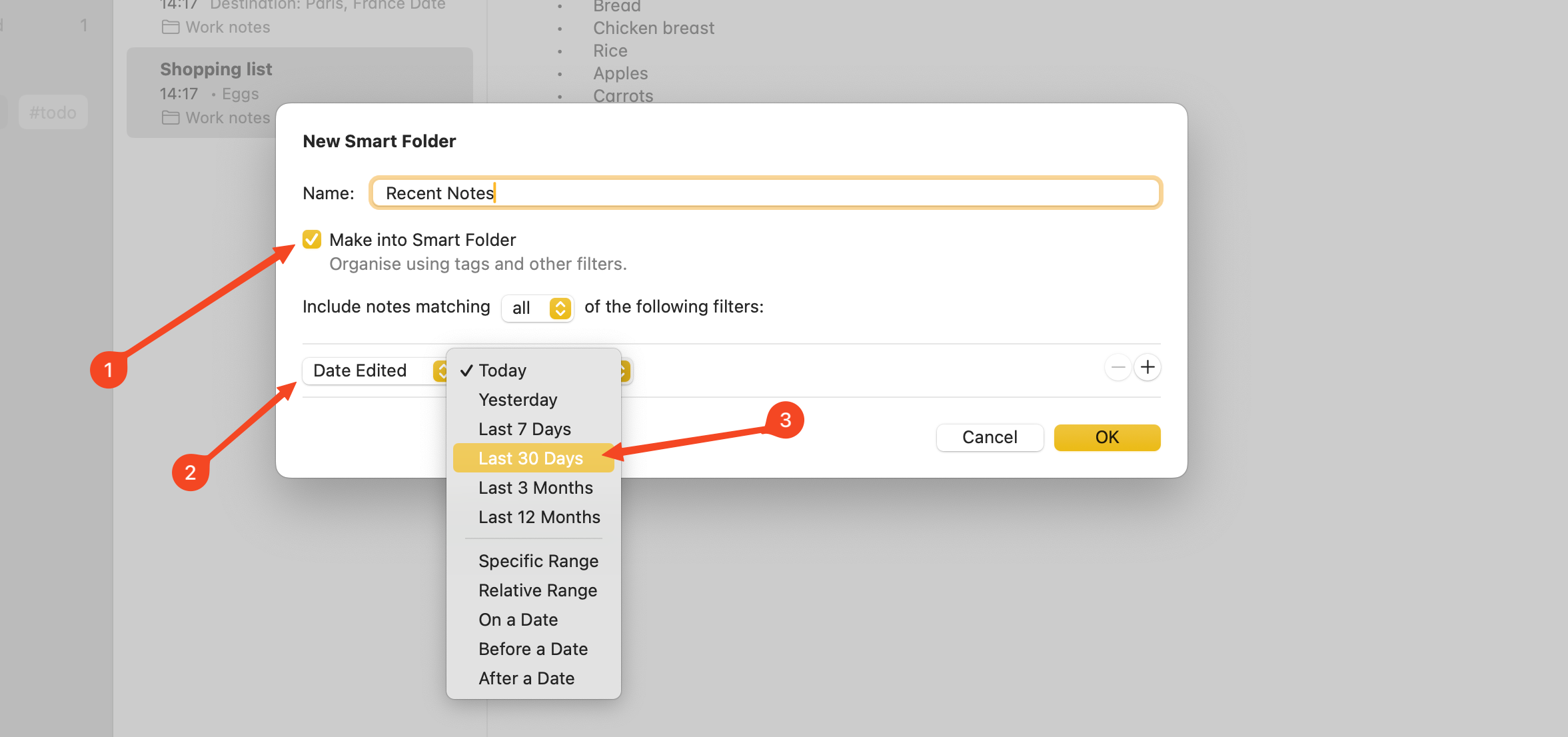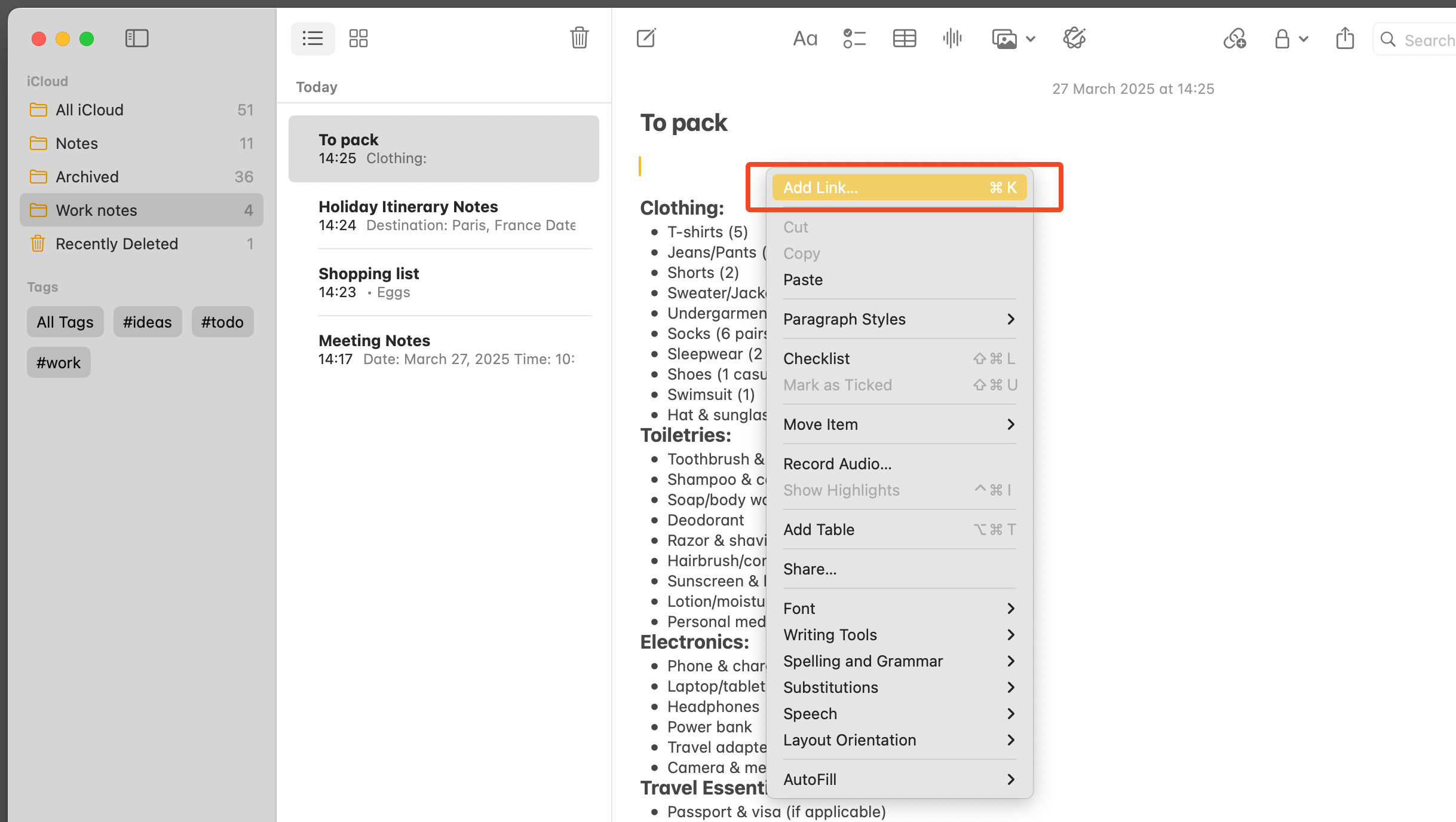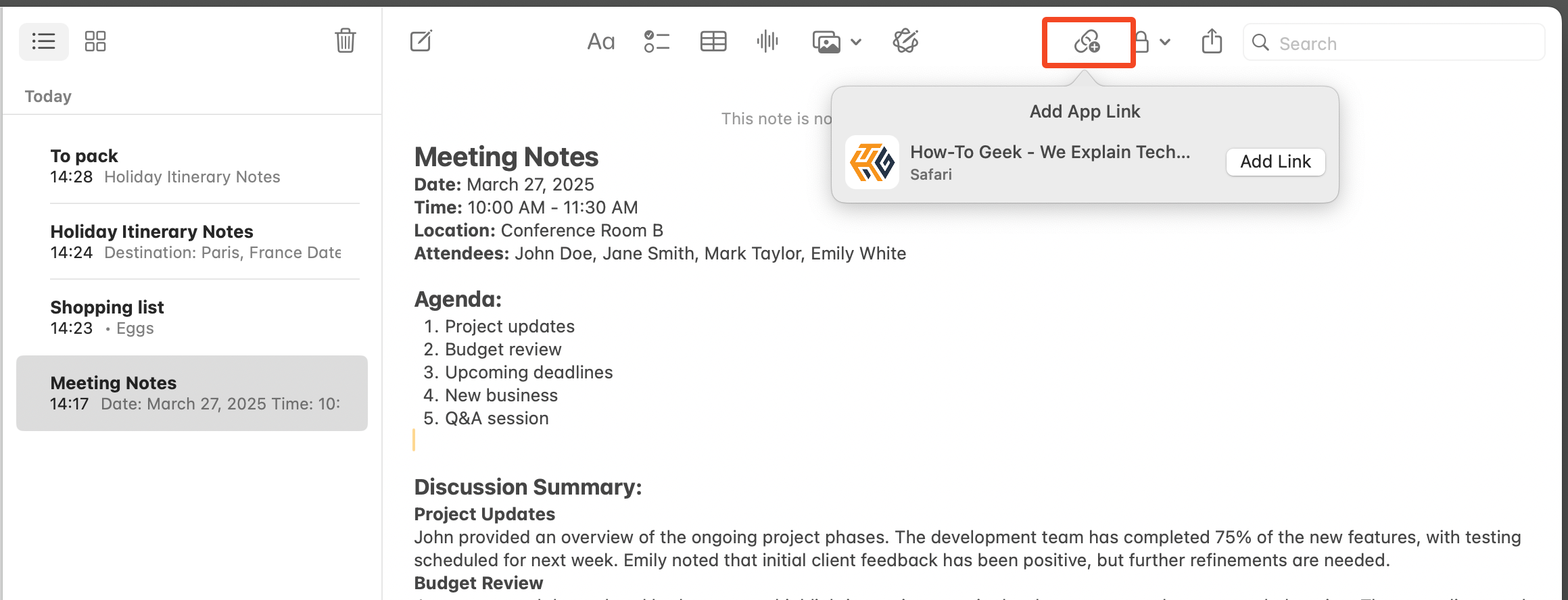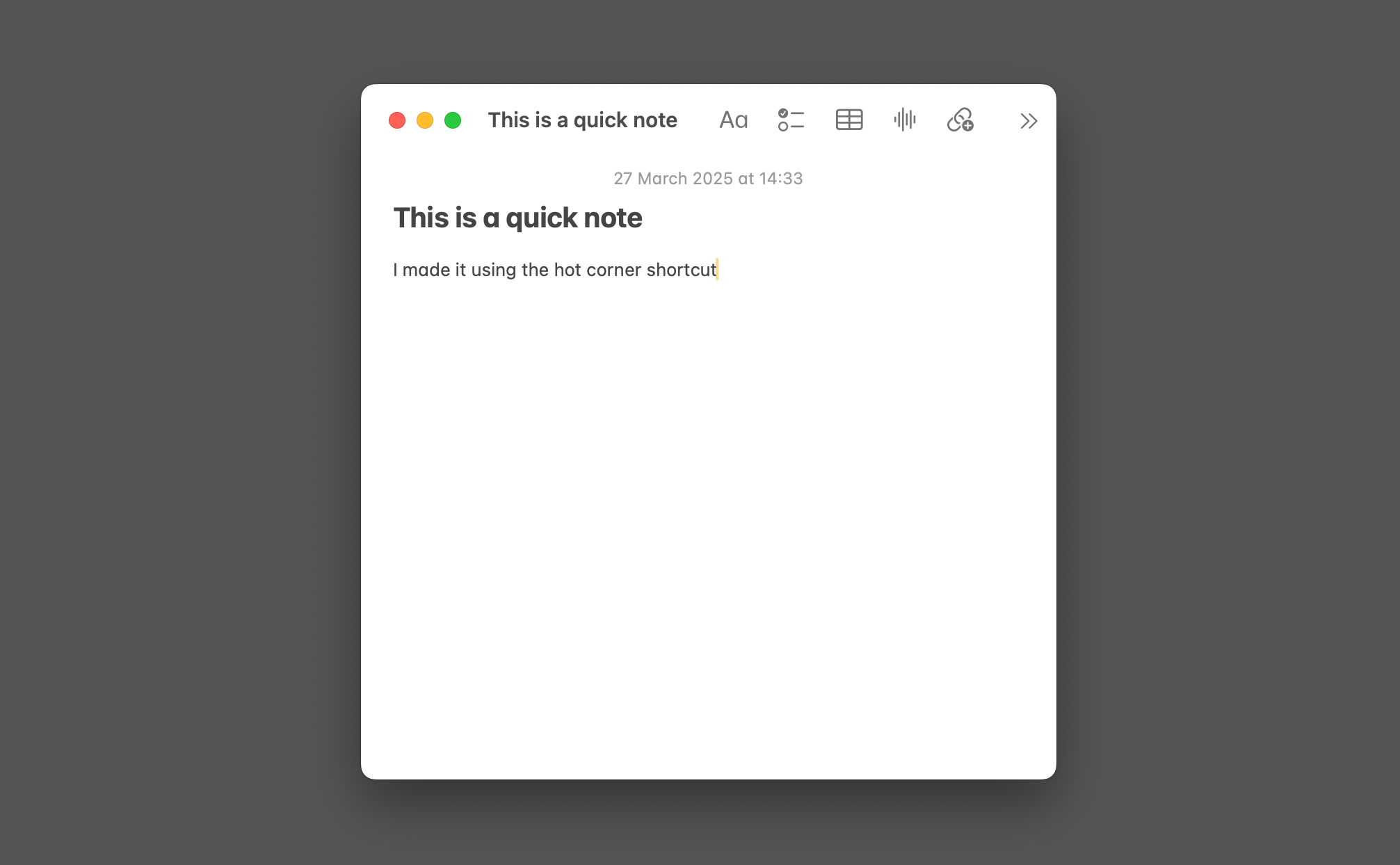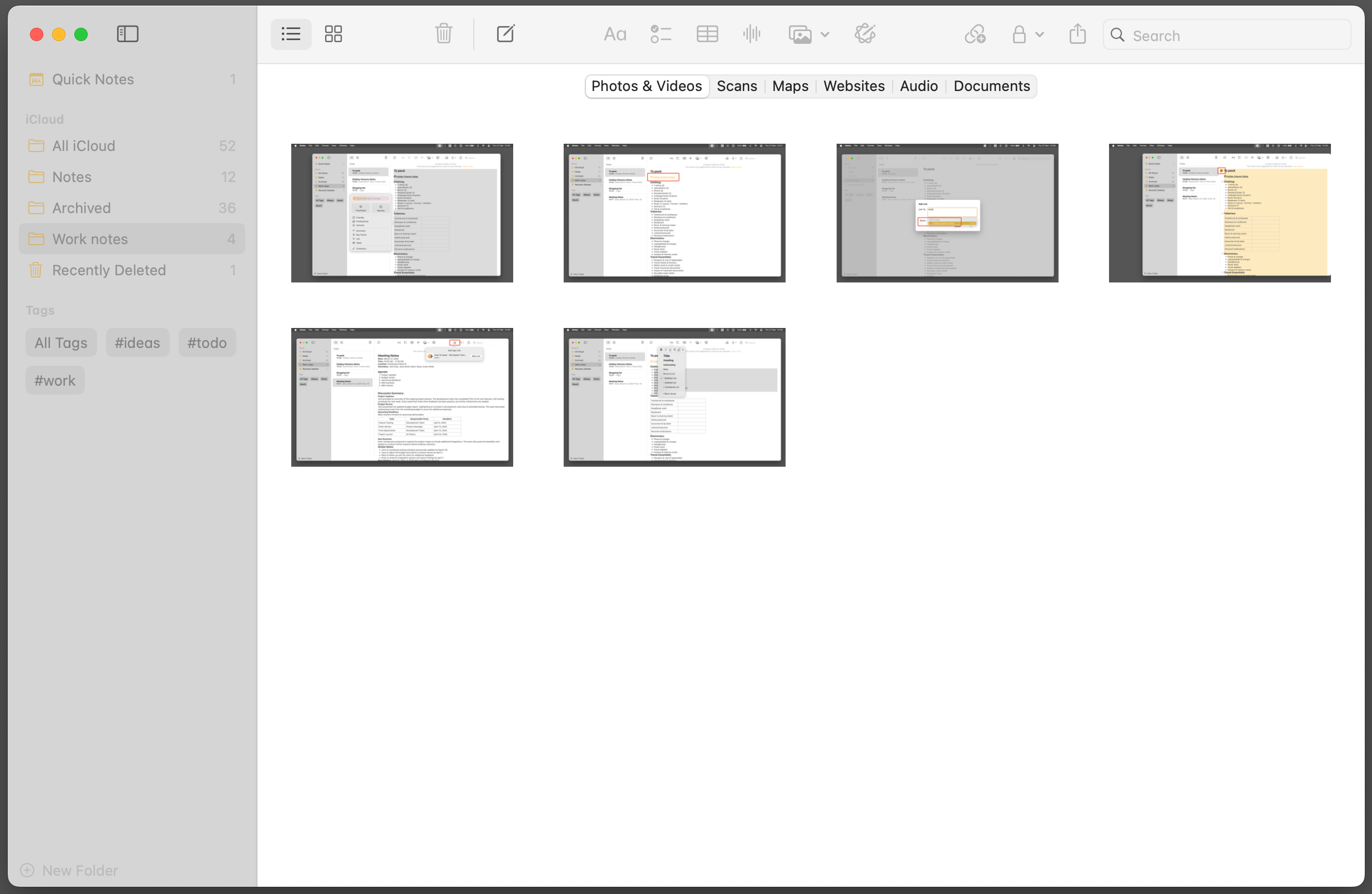Apple Notes has been a standalone app in macOS since 2012. It’s easy to take for granted, but over the years, it has grown and added some useful and powerful features. From ways to improve your note-taking to tools for better organization, here’s how to get more from the Notes app.
We’re used to hashtags on social media, and Notes supports them too. Simply type them into your notes, and they will appear in the Tags section in the sidebar. You can then click one to surface all the notes containing that tag. You can add as many as you like, and place them anywhere inside the note.
2
Be Even More Organized With Smart Folders
It’s obvious to use folders to manage your notes. But Smart Folders are even more powerful. These are virtual folders that update dynamically based on specific criteria. Need to find a note you’ve edited recently, or shared with a particular person? That’s what Smart Folders are for.
In the sidebar, click “New Folder,” then check the box labeled “Make into Smart Folder.” You can create Smart Folders around a range of factors, including the type of note, its date, or whether you’ve shared it.
There are two I find helpful. One is “Date Edited,” set to “Last 30 Days” to show only my active notes. The other is “Attachments,” set to “Any” to show only notes containing attached files.
3
Link Notes Together
One other way to keep the app organized is to use links. They make it easier to reference a note from within another, or to split a lengthy note into multiple shorter ones. To do it, right-click inside a note and select “Add Link” from the menu.
Then, start typing the note’s title into the box and select it when it pops up. That’s all you need to do. Now click the link to open the linked note.
4
Format Your Notes
For a long time, everything I wrote in Notes was basically plain text. However, the app offers a comprehensive range of formatting options that are effective in making notes more readable.
Click the Styles button in the toolbar, and you can format the title, headings, lists, quotes, text color, and so on. You can add checklists and tables as well. One neat trick is to highlight some text, then click the Table button to automatically turn that text into a table.
Formatting is also great if you plan to use one of Notes’ other lesser-known features: “Open in Pages.” Select this option via the Share button on the toolbar or through the File menu, and your note will open in Apple’s Pages app with all its formatting in place. This is the easy way to turn quick notes into fully-fledged documents.
5
Quickly Add Web Links
If you need to add a link to a website to a note, you can do it without copying and pasting. Load up the page in your browser, then open a note and click the “Add a Link” button on the toolbar. You’ll see the link to the website ready to paste into your note.
What’s surprising about this is that it isn’t just limited to webpages you’ve got open in Safari. It works with other browsers like Chrome and Brave as well.
6
Lock Notes for Privacy
Notes has built-in security that lets you lock specific notes to keep them private. Click the Padlock icon on the toolbar to set this up. You can use your device’s password or create a separate password for extra security, then enable Touch ID once it’s set up. The notes become locked when you exit the app.
There are some limitations: you can’t lock notes that contain tags, attachments, or audio notes, and there may be issues with notes created in different versions of the app.
7
Create Quick Notes With Hot Corners
You don’t have to launch the full app when you just need to jot something down, you can use the Quick Note feature assigned to a hot corner. Drag your mouse pointer to the bottom right corner of the screen to pop open a Quick Note window. You can configure this through Settings > Desktop & Dock > Hot Corners.
If you’re triggering the Quick Note too often, or you’ve got other uses for your Hot Corners, you can disable the Hot Corner and use the Fn+Q keyboard shortcut to launch your Quick Note instead.
By default, Quick Note opens to the same note each time. To change this, go to Settings and deselect “Always resume to last Quick Note.”
As convenient as Quick Note is, I don’t use it that often. One of my essential Mac apps is the menu bar note-taking tool, Tot.
8
Summarize Notes With Apple Intelligence
Apple Intelligence is built into Notes and is one of the better uses for Apple’s AI tools.
It’s especially good for summarizing lengthy notes, reworking them into bullet points, or organizing lots of information into tables. To use it, highlight the text and the little Apple Intelligence icon will appear at the start of the first paragraph. Click it for your options.
9
Find Your Attachments
Over time, you can end up adding a lot of attachments to your notes. They might be PDFs, images, scans, websites, or anything else. Smart Folders can help you find them, but they can still be hard to keep track of.
Notes has a tool for this. Go to View > Show Attachments Browser and you will see a screen with all the attachments you’ve added to your notes in one place, sorted by type.
Some people use Apple Pages for notes, some just use TextEdit. Apple Notes sits in between the two. It’s powerful and flexible, but also quick and easy to use. Exploring some of its features helps to make it even more essential.



